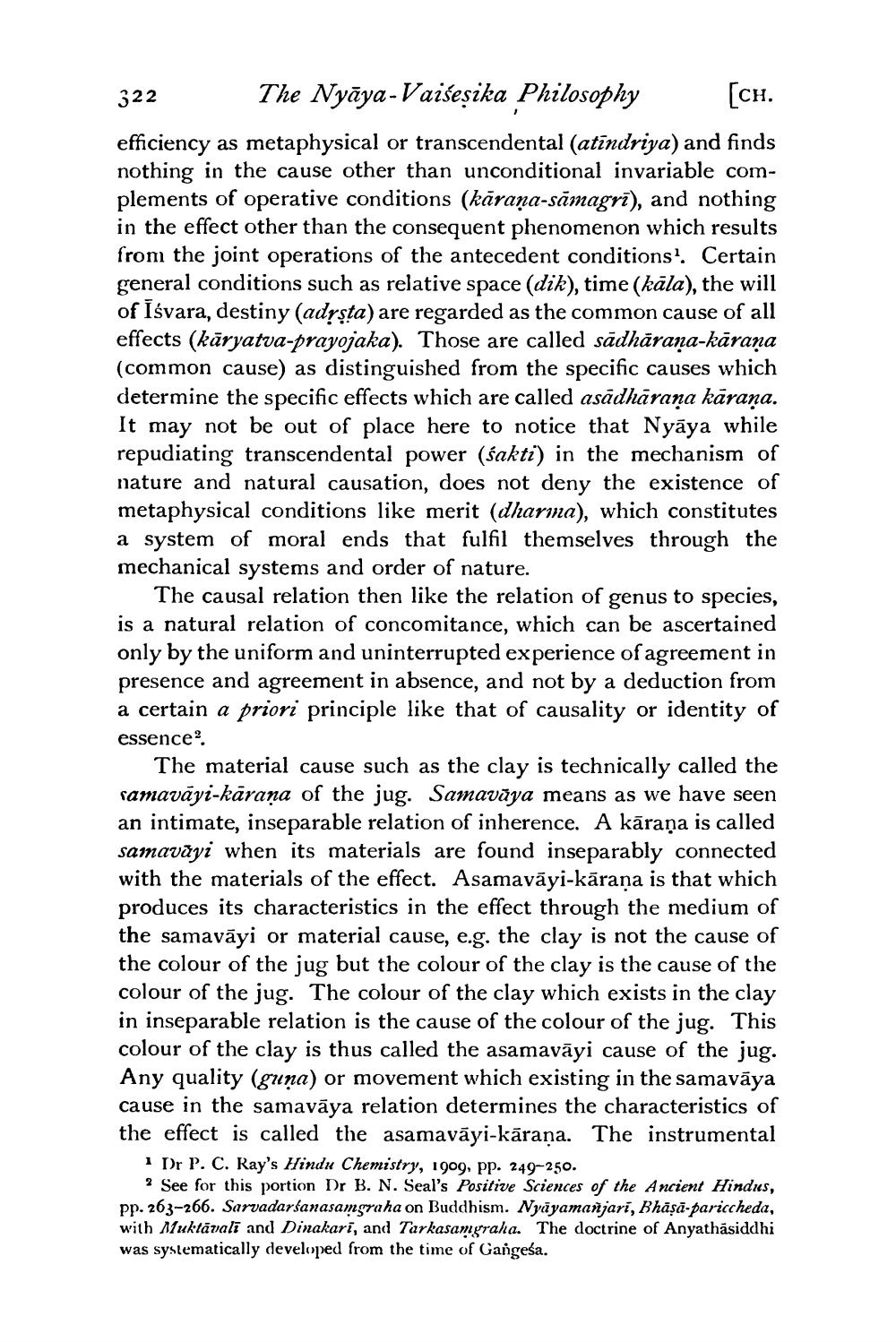________________
322
The Nyāya-Vaiseșika Philosophy [ch. efficiency as metaphysical or transcendental (atīndriya) and finds nothing in the cause other than unconditional invariable complements of operative conditions (kāraṇa-sāmagri), and nothing in the effect other than the consequent phenomenon which results from the joint operations of the antecedent conditions?. Certain general conditions such as relative space (dik), time (kāla), the will of īśvara, destiny (adysta) are regarded as the common cause of all effects (kāryatva-prayojaka). Those are called sādhāraṇa-kāraña (common cause) as distinguished from the specific causes which determine the specific effects which are called asādhāraṇa kāraṇa. It may not be out of place here to notice that Nyāya while repudiating transcendental power (sakti) in the mechanism of nature and natural causation, does not deny the existence of metaphysical conditions like merit (dharına), which constitutes a system of moral ends that fulfil themselves through the mechanical systems and order of nature.
The causal relation then like the relation of genus to species, is a natural relation of concomitance, which can be ascertained only by the uniform and uninterrupted experience of agreement in presence and agreement in absence, and not by a deduction from a certain a priori principle like that of causality or identity of essence?
The material cause such as the clay is technically called the samavāyi-kāraṇa of the jug. Samavāya means as we have seen an intimate, inseparable relation of inherence. A kāraṇa is called samavāyi when its materials are found inseparably connected with the materials of the effect. Asamavāyi-kārana is that which produces its characteristics in the effect through the medium of the samavāyi or material cause, e.g. the clay is not the cause of the colour of the jug but the colour of the clay is the cause of the colour of the jug. The colour of the clay which exists in the clay in inseparable relation is the cause of the colour of the jug. This colour of the clay is thus called the asamavāyi cause of the jug. Any quality (guna) or movement which existing in the samavāya cause in the samavāya relation determines the characteristics of the effect is called the asamavāyi-kārana. The instrumental
Dr P. C. Ray's Hindu Chemistry, 1909, pp. 249–250. ? See for this portion Dr B. N. Seal's Positive Sciences of the Ancient Hindus, pp. 263-266. Sarvadarśanasamgraha on Buddhism. Nyāyamañjari, Bhāṣā-pariccheda, with Muktavali and Dinakari, and Tarkasamgraha. The doctrine of Anyathasiddhi was systematically developed from the time of Gangeśa.
B. Ni som Buddhierana. I




